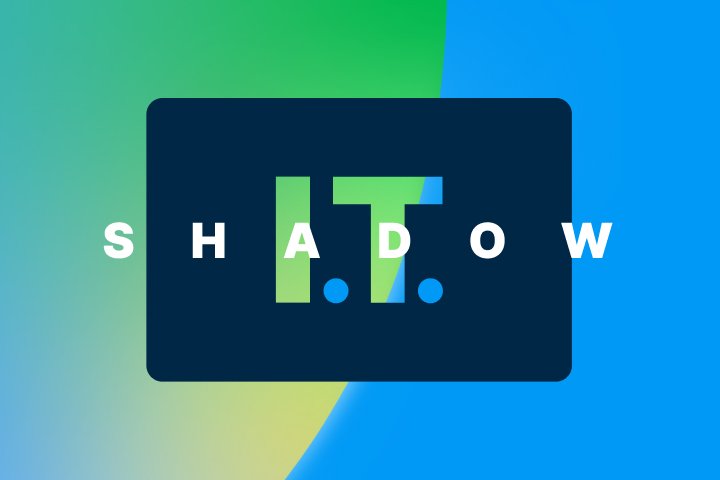Phishing attacks have evolved far beyond simple scams targeting individuals—they're now a critical threat to businesses of all sizes. In a business environment, phishing is used to gain unauthorized access to corporate networks, steal intellectual property, or trick employees into transferring funds. Attackers are increasingly sophisticated, often impersonating executives or vendors in business email compromise (BEC) schemes. Given the high stakes, it’s essential for organizations to understand how phishing works, the types of phishing attacks, and how to take proactive measures to defend your data and operations.
This article explains how phishing works in general and in a business setting and outlines practical strategies to protect your organization.
What is phishing?
Phishing is a deceptive practice where cybercriminals pose as trustworthy entities, often through email, to steal personal or financial information. For example, an employee might receive an email that looks like it’s from their bank, asking them to update their login details. When they do, the attacker gains access to their account.
Types of phishing:
Spear phishing: Targets specific individuals or organizations with personalized messages.
Whaling: Focuses on high-profile targets like CEOs or CFOs.
Clone phishing: Involves creating a nearly identical copy of a legitimate message with malicious links or attachments.
Smishing: Phishing attacks delivered via text messages (SMS), often urging recipients to click on a link or call a number.
Vishing: Voice phishing where attackers use phone calls to trick victims into giving up sensitive information.
Angler phishing: Uses social media platforms to impersonate customer service accounts or send malicious links via fake profiles.
How phishing works in a business setting
Phishing in a business environment is often more targeted and sophisticated than consumer attacks, as organizations hold more valuable data. That’s why conscious data protection is of upmost importance. Attackers know that compromising a business can lead to access to sensitive information, financial accounts, and even client data. With techniques like email spoofing, social engineering, and business email compromise (BEC), phishing attacks on businesses are designed to manipulate trust and authority, making them harder to detect and potentially far more damaging.
Techniques most often used in business phishing:
- Email spoofing: Attackers manipulate the "From" address in an email to make it appear as though it’s from a trusted source, like a vendor or colleague. This method encourages recipients to trust and engage with the email, often leading to them downloading malicious files or sharing sensitive data.
- Social engineering: By exploiting human psychology, attackers manipulate victims into disclosing confidential information. They use tactics like pretending to be an authority figure, creating urgency, or leveraging trust to gain access.
- Business email compromise (BEC): A more targeted phishing technique where attackers pose as senior executives (like the CEO or CFO) and instruct specific employees to perform high-risk actions, such as authorizing wire transfers or sharing sensitive data. These requests often seem urgent and legitimate due to the impersonation of key figures within the organization.
- Technical aspects of phishing attacks on businesses: Phishing emails often contain malicious links or attachments that, when clicked, download malware (like ransomware ) or redirect to a fake login page. Attackers may also use phishing kits—pre-built tools that make it easy to replicate a legitimate website’s appearance. Once inside a company’s network, these attacks can escalate to full-scale breaches, causing significant disruption.
Tip: However, encryption of sensitive data—both in transit and at rest—can help protect it, even if attackers gain unauthorized access through phishing. Do you know how to use data encryption?
What are the latest statistics of phishing attacks?
Phishing remains a major threat to data security in 2024, with recent data highlighting its widespread impact:
- Over 36% of breaches involved phishing, making it a leading cause of cyber incidents. Industries like finance and healthcare were especially targeted (Verizon DBIR 2024)
- A 30% increase in phishing attempts has been detected in the past year, with AI-generated content making attacks harder to detect (Microsoft).
- 75% of organizations experienced a phishing attack in 2024, with a notable rise in mobile-based phishing (smishing) (StationX).
Why is phishing still successful in 2024?
Phishing remains a major threat in 2024 for a few key reasons:
- Human error and awareness gaps: Despite ongoing efforts in cybersecurity training, employees still fall victim to sophisticated phishing schemes. Attackers continually refine their methods, making it difficult for even well-trained individuals to recognize threats.
- Advances in phishing tactics: Cybercriminals now use AI to craft emails and messages that closely mimic legitimate communications. These AI-generated attacks are often indistinguishable from real messages, increasing their success rates.
- Sophisticated methods: Attackers employ cutting-edge techniques like deepfakes, machine learning, and advanced social engineering to deceive targets. These methods create more personalized and convincing attacks, which are harder to detect and more likely to succeed.
Trends in phishing attacks
Phishing tactics are continually evolving, and several notable trends have emerged in 2024 that organizations should be aware of:
- Increase in mobile phishing (smishing): As employees use mobile devices more frequently for work, cybercriminals are taking advantage by sending fraudulent SMS messages with malicious links—this is known as smishing. These messages often imitate trusted entities and trick users into clicking harmful links.
Example: An employee might receive a text that appears to be from their company's IT department, instructing them to "reset their password" through a link. Clicking on it could compromise their device or expose sensitive data.
- Challenges of remote work and BYOD policies: The rise of remote work and Bring Your Own Device (BYOD) policies has expanded the potential entry points for phishing attacks. Personal devices may not have the same data security measures as corporate ones, making them more susceptible to threats. This dispersed work environment can make it harder for IT teams to monitor and respond to security incidents promptly.
Tip: Ensure that all devices accessing company data have up-to-date security software and that employees are trained on best practices for remote work security.
- Targeted attacks on specific industries and executives: Cybercriminals are increasingly focusing on high-value targets, such as executives (a tactic known as whaling) and industries like finance, healthcare, and technology. These sectors often hold sensitive data and valuable intellectual property, making them attractive targets for cyber criminals.
Advice: Implement specialized training for executives and staff in high-risk industries to recognize and respond to sophisticated phishing attempts.
It’s important to stay aware of these phishing trends so your company can respond effectively. Regular training, solid data security practices, and advanced tools like DLP software are great ways to protect your business from threats like phishing. DLP helps monitor and safeguard sensitive information, while training keeps your team alert to common tricks. By combining employee education with strong defenses, you’re better equipped to stop phishing before it becomes a serious issue.
Best practices for preventing phishing
Preventing phishing requires a multi-layered approach that combines education, technical defenses, and continuous monitoring. Here are some practical and actionable tips to boost your organization’s data protection:
![]()
Educate employees on phishing red flags
Educate your employees about cybersecurity and equip them with a clear list of warning signs to watch out for in emails and messages:
- Suspicious sender addresses: Be cautious of email addresses that don’t match the sender's name or organization (e.g., jdoe@micros0ft.com).
- Urgent language: Phishing emails often use urgent language to pressure recipients into acting quickly without thinking.
- Unexpected attachments or links: Don’t click on attachments or links that you weren’t expecting; verify with the sender first.
- Generic greetings: Emails that start with “Dear Customer” or similar generic greetings instead of your name are often phishing attempts.
Real-time alerts and response policies
Implement real-time alerts and establish clear response procedures to ensure swift action:
- Real-time alerts: Set up notifications for suspicious activities, such as:
- Multiple failed login attempts: Could indicate a brute-force attack.
- Unusual data access patterns: Sudden access to large amounts of data could be a sign of a compromised account.
- Unauthorized data transfer attempts: Any attempt to send sensitive information outside the organization should trigger an alert.
- Response policy: Have a clear plan in place for when alerts are triggered:
- Immediate isolation: Disconnect affected devices from the network to prevent the spread of threats.
- Incident reporting: Ensure employees report any suspected phishing attempts to IT immediately.
- Containment and analysis: IT should analyze the incident, contain the threat, and assess the scope of the breach.
- Post-incident review: After resolving the incident, review and identify gaps in your security measures so your policies are always on top of their game.
Regular updates and simulations
Keep your security practices sharp with ongoing testing:
- Phishing simulations: Regularly run phishing simulations to assess employee awareness and identify potential weaknesses. Use the results to provide targeted training for those who may need extra guidance.
- Security bulletin updates: Keep your team informed about the latest phishing techniques and data security threats by sharing relevant updates and real-world examples. This helps ensure that everyone stays vigilant and prepared to recognize new risks.
Implement multi-factor authentication (MFA), encryption, and technical defenses
Make sure to layer your security measures:
- MFA and data encryption: Layer your security measures by using multi-factor authentication (MFA) and encryption to protect sensitive data. Even if an attacker gains access to a password, MFA ensures that’s not enough to breach your systems, while data encryption ensures that even if an attacker gains access to your network via phishing, they cannot easily read the confidential information without the proper decryption keys. Read about Data Encryption in our full guide.
- Email filtering and anti-phishing tools: Use smart email filters to catch phishing attempts before they land in your employees’ inboxes. Anti-phishing tools can also scan links and attachments to ensure they’re safe.
- Data loss prevention (DLP): Implement DLP solutions like Safetica to keep a close eye on your data. DLP helps spot suspicious activities and stops unauthorized data transfers, ensuring your sensitive information stays protected.
Creating a culture of security
- Encourage reporting: Make it easy for employees to report suspected phishing attempts without fear of repercussions. A culture of open communication can significantly reduce the risk of successful attacks.
- Ongoing education: Cybersecurity is a field that never sleeps and keeps evolving. Ensure continuous learning and adaptation to new threats by offering regular training sessions and keeping data security policies current.
How DLP software helps prevent phishing attacks
Data loss prevention software is a powerful tool that businesses should use in the fight against phishing. Here’s how DLP can help protect your organization:
- Monitoring and controlling data movement: DLP software tracks and monitors data movement across your network, detecting unauthorized access or transfers that could indicate a phishing attack. For example, if sensitive data is being sent to an unknown external source, DLP can block the transfer and alert your security team.
- Identifying unusual behavior: DLP solutions use advanced algorithms to detect unusual data access patterns, such as large amounts of data being accessed or exported by a single user. This can be a sign of compromised credentials due to a phishing attack.
- Protecting sensitive information: DLP ensures that sensitive data, such as customer information or intellectual property, is protected from unauthorized access. In the event that phishing leads to an attempted data breach, DLP can prevent the exfiltration of this data.
- Integration with existing security measures: DLP works best when integrated with your existing security infrastructure, such as your email filtering and endpoint protection systems. By creating a unified security environment, DLP enhances your ability to detect and respond to phishing threats quickly and effectively.
By implementing these practices and leveraging the capabilities of DLP software, your organization can significantly reduce the risk of falling victim to phishing attacks.
How Safetica can help stop phishing attacks in your organization
Safetica’s Data Loss Prevention (DLP) solutions offer powerful tools to keep your business secure from threats like phishing (and much, much more!). Safetica provides:
- Comprehensive data monitoring: Track and control data movement across endpoints to stop breaches before they happen.
- Advanced threat detection: Safetica can identify unusual behavior and insider threats in real-time.
- Policies enforcement: Enforce data loss prevention policies to prevent accidental or intentional data leaks.
- Seamless integration: Works alongside your existing infrastructure without disruption.
- User-friendly deployment: Our solutions are designed for easy implementation, minimizing compatibility issues and providing swift deployment across your existing IT infrastructure.
Next articles

Hidden Data Everywhere: Why It’s Important to Have Complete Visibility for Data Security
Modern work creates blind spots across shadow IT, AI tools, personal devices, and third-party services. This article explains why visibility is essential for effective data discovery and stronger data protection.
